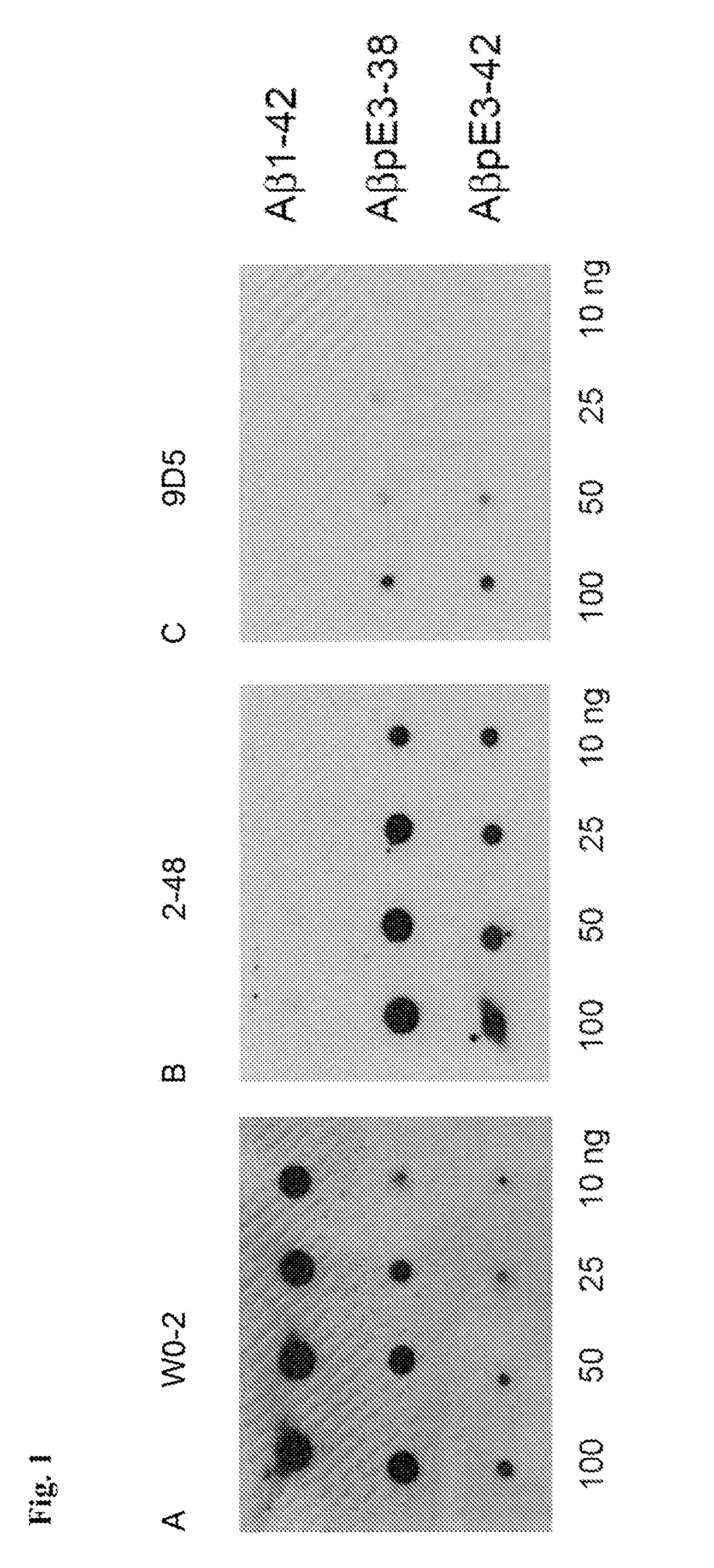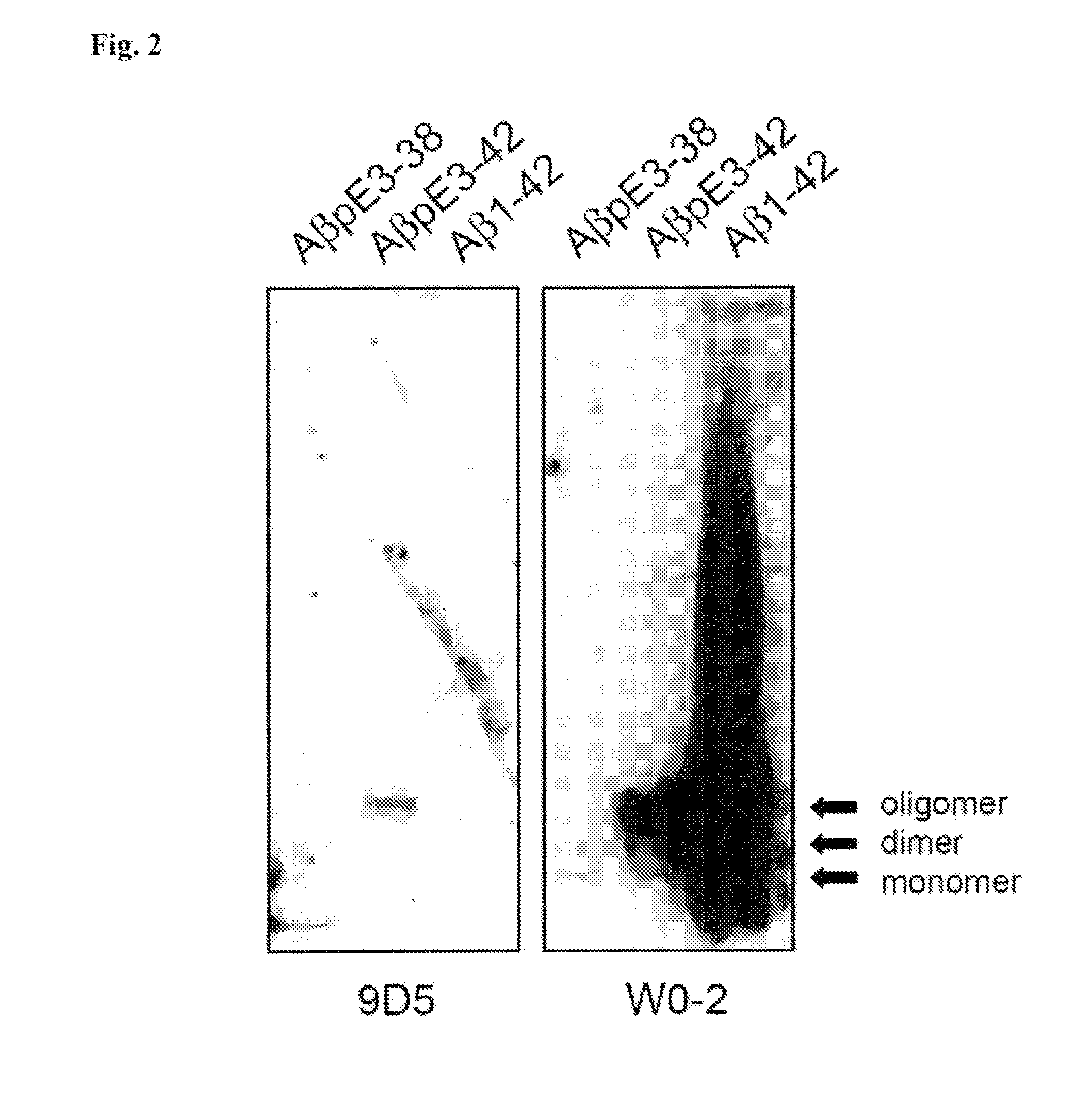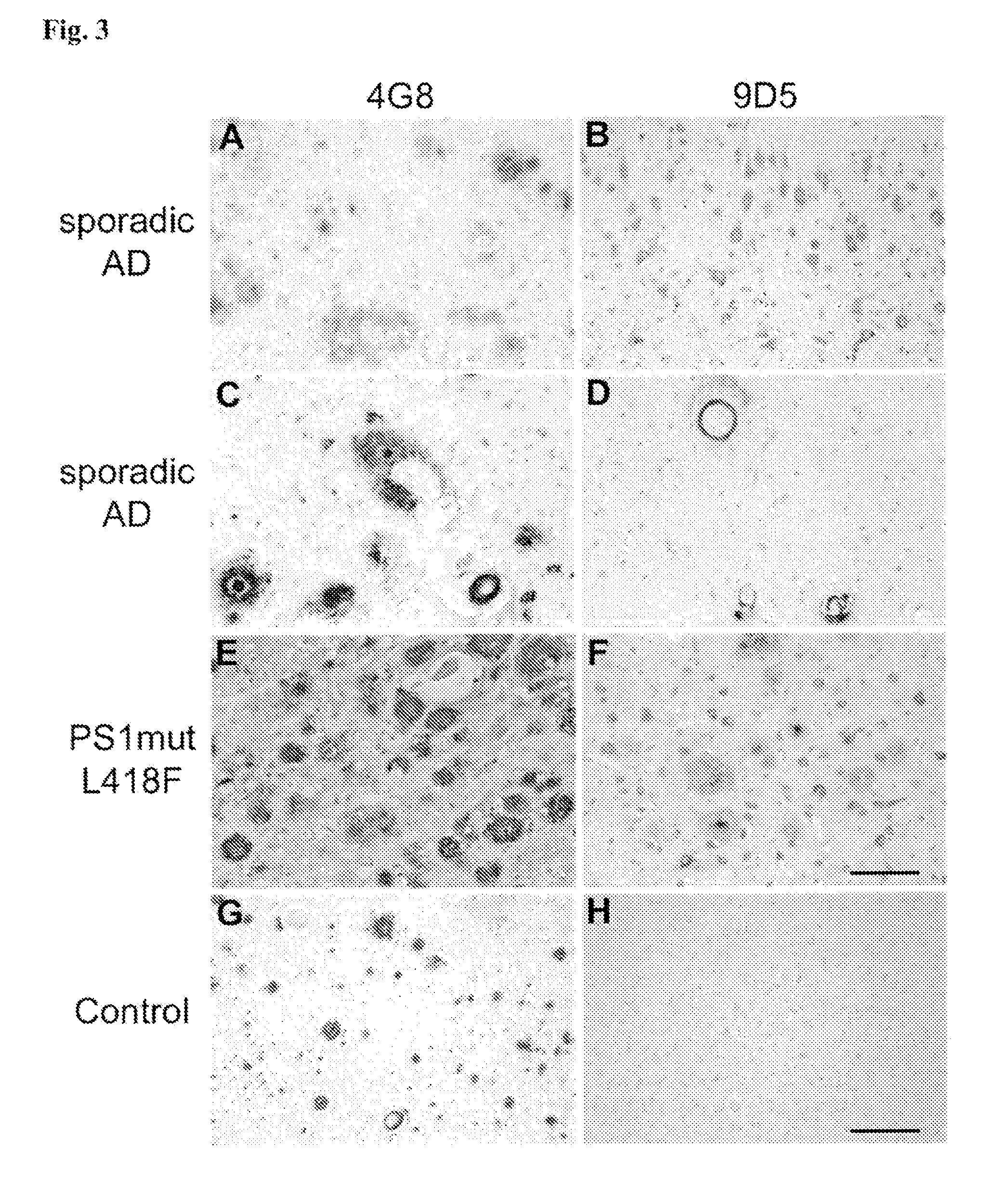Monoclonal antibodies targeting amyloid beta oligomers
a monoclonal antibody and amyloid beta technology, applied in the field of progressive neurodegenerative diseases, can solve the problems of affecting the non-pathologic function of qc, it is still difficult to distinguish individuals not actually suffering from amyloid or a-related dementia, and achieves reduced ape3 levels, reduced the general a-plaque load, and higher oligomerization.
- Summary
- Abstract
- Description
- Claims
- Application Information
AI Technical Summary
Benefits of technology
Problems solved by technology
Method used
Image
Examples
example 1
Antibodies and Peptides
[0213]The AβpE3 oligomere specific antibodies 9D5H6 (IgG2b) and 8C4D2 (IgG1) were generated by immunizing three Balb / c mice with AβpE3-38. After preparation of the lymph nodes cells were fused with the myeloma cell line P3-X63-Ag8. The hybridoma supernatants of mixed clones were screened by ELISA and subcloned. The monoclonal antibodies 9D5 and 8C4 were selected by ELISA against different N-terminal Aβ epitopes. Clones producing signals with AβpE3-38 and AβpE3-42, but no signal with AβpE1-42 were isolated and further characterized. For comparison, Aβ antibodies 4G8 (Aβ epitope 17-24; Covance), W0-2 (Aβ epitope 4-8; The Genetics Company), NT78 (against generic Aβ1-16, Synaptic Systems) and 2-48 (against N-terminal AβpE3, Synaptic Systems; Wirths, O., et al. J Neural Transm 117, 85-96 (2010)) were used. GFAP (rabbit) and IBA1 (rabbit) antisera were from Synaptic Systems and Wako Pure Chemicals respectively. Peptides were purchased from PSL (Heidelberg, Germany),...
example 2
[0214]For each Western blot, 10 ng of peptide was loaded per lane of a 12% Bis-Tris gel in MES buffer and run at 150 volts for 1 h. The peptides were then transferred to 0.45 μm nitrocellulose for 1 h at 100 mA per membrane using wet transfer in Towbin buffer. Post transfer, membranes were incubated in PBS, pH 9.0 at 95° C. for 5 min, which allows for improved access to the antigen. Membranes were then blocked in 2% NFDM / PBS, pH 9.0 for 1 h at room temperature while gently mixing, before overnight incubation at 4° C. using the primary antibodies W0-2 (1 μg / ml); 9D5H6 (10 μg / ml) and 2-48 (10 μg / ml) in blocking buffer. Membranes were rinsed in PBS / 0.05% Tween-20 (pH 9.0) three times for 5 min. Secondary anti-mouse IgG-HRP was applied in blocking conditions at a 1:10,000 dilution for 1 h at room temperature. Membranes were rinsed in PBS / 0.05% Tween-20 (pH 9.0) three times for 10 min. The blots were developed using ECL Advance (GE Healthcare) by applying the chemiluminescent...
example 3
[0215]All statistical analysis was performed using unpaired t-test with GraphPad Prism version 4.03 for Windows (GraphPad Software, San Diego, Calif., USA). Data were presented as mean±s.e.m.
PUM
| Property | Measurement | Unit |
|---|---|---|
| molecular weight | aaaaa | aaaaa |
| molecular weight | aaaaa | aaaaa |
| molecular weight | aaaaa | aaaaa |
Abstract
Description
Claims
Application Information
 Login to View More
Login to View More - R&D
- Intellectual Property
- Life Sciences
- Materials
- Tech Scout
- Unparalleled Data Quality
- Higher Quality Content
- 60% Fewer Hallucinations
Browse by: Latest US Patents, China's latest patents, Technical Efficacy Thesaurus, Application Domain, Technology Topic, Popular Technical Reports.
© 2025 PatSnap. All rights reserved.Legal|Privacy policy|Modern Slavery Act Transparency Statement|Sitemap|About US| Contact US: help@patsnap.com



